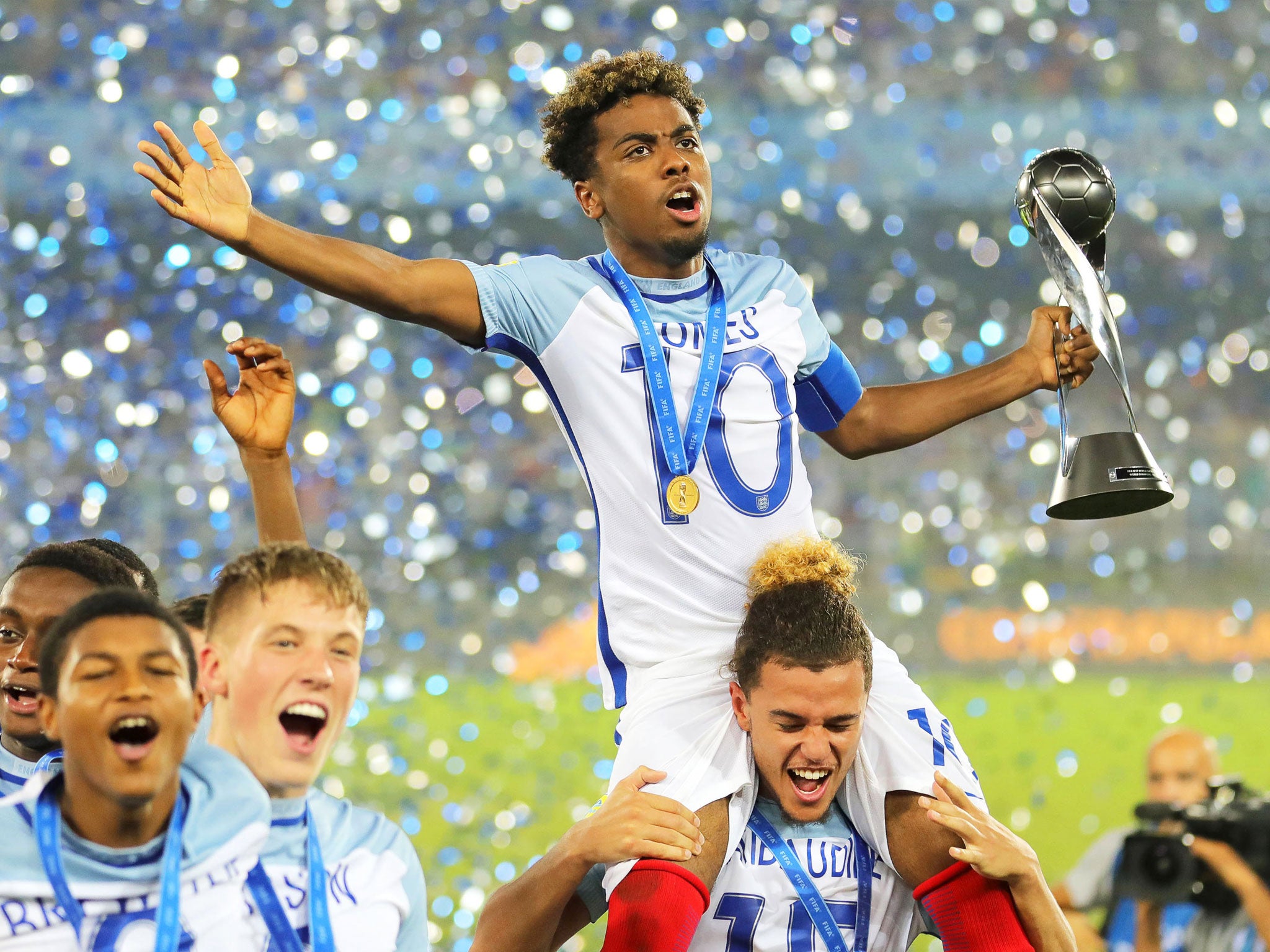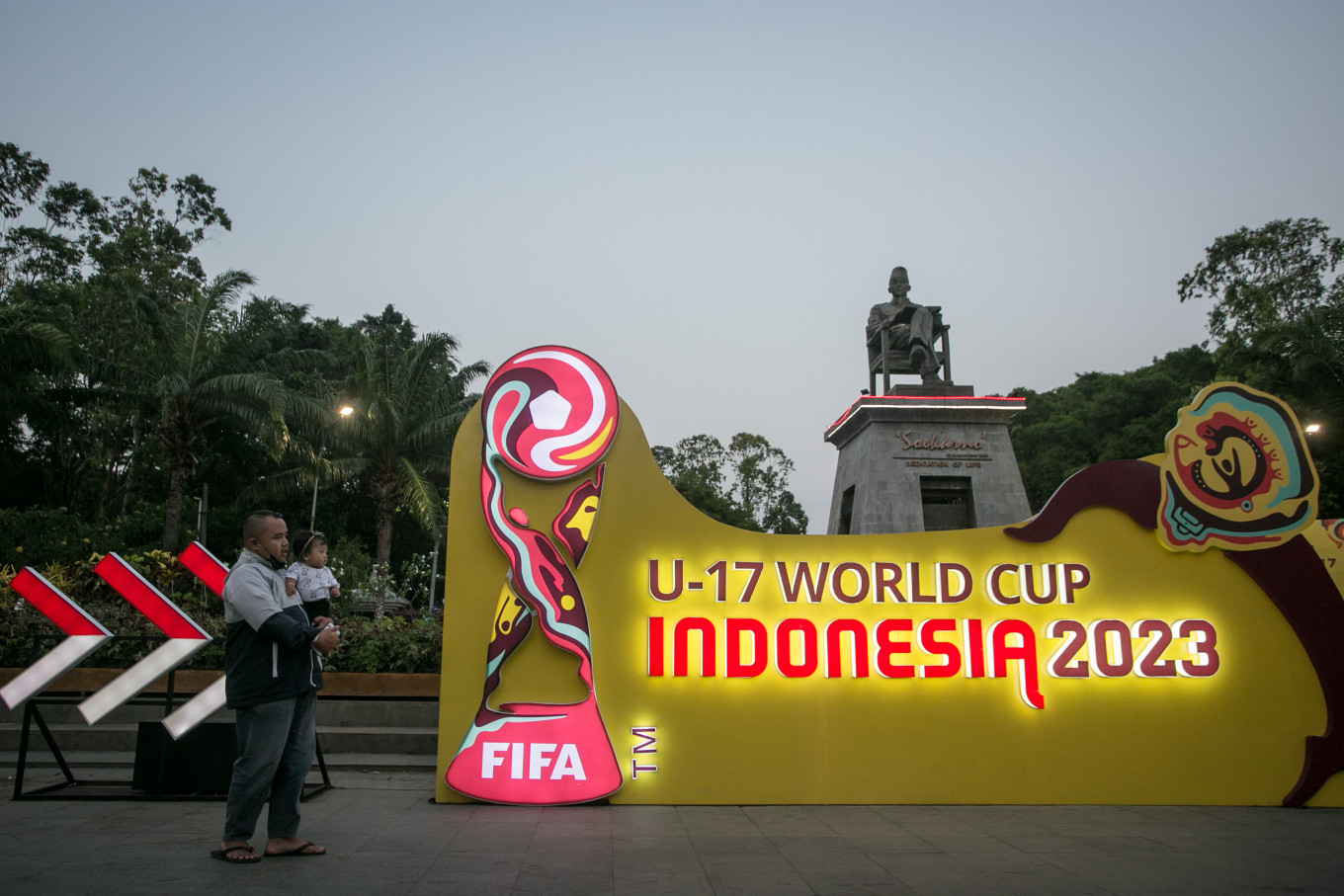Soccer World Cup Under 17: Get ready for a whirlwind tour through the electrifying world of youth soccer! This isn’t your grandpappy’s World Cup – it’s a vibrant spectacle of raw talent, breathtaking goals, and future superstars in the making. We’ll dive deep into the history of this incredible tournament, exploring its evolution, iconic moments, and the incredible players who’ve graced its pitches.
From the thrilling victories to the heartbreaking defeats, we’ll uncover the stories that make the U-17 World Cup a truly unforgettable experience.
Prepare to be amazed by the incredible journeys of young athletes who’ve risen through the ranks, showcasing their skills on the global stage. We’ll examine the impact of this tournament on national teams, youth development programs, and the overall landscape of international football. Get ready to discover the next generation of football legends!
Tournament History
The FIFA U-17 World Cup, previously known as the FIFA World Youth Championship, boasts a rich history filled with thrilling matches, future stars, and unforgettable moments. Since its inception, the tournament has served as a crucial stepping stone for countless players who would go on to achieve global recognition in the senior game. This section delves into the evolution of the competition, highlighting key moments, winning teams, and remarkable individual performances.
Early Years and Format Changes, Soccer world cup under 17
The inaugural FIFA U-17 World Cup was held in China in 1985. Initially, the tournament featured a relatively straightforward group stage followed by a knockout phase. Over the years, the format has seen minor adjustments, primarily concerning the number of teams participating and the specific structure of the group stages. For example, the number of teams increased gradually, reflecting the growing global interest in youth football.
Rule changes have been less dramatic, generally aligning with the overall evolution of the Laws of the Game at the senior level. These subtle changes in format and rules have ensured the tournament remains engaging and competitive while adapting to the changing landscape of youth football.
Significant Moments and Winning Teams
Several editions stand out due to their dramatic finishes, surprising upsets, and the emergence of exceptional talent. The 1997 tournament in Egypt, won by Brazil, is often cited for its high-scoring matches and exciting gameplay. Nigeria’s victory in 2007 showcased the continent’s growing strength in youth football. The tournament has also witnessed remarkable comebacks and nail-biting penalty shootouts that have captivated audiences worldwide.
These moments have solidified the U-17 World Cup’s place as a premier international youth competition.
Notable Individual Performances
Many players who have graced the U-17 World Cup stage have gone on to become household names in the world of football. For instance, Lionel Messi’s performance in the 2005 edition in Peru was a harbinger of his future greatness. Other players, such as Cesc Fàbregas, have also used the tournament as a platform to showcase their talent and launch their professional careers.
The tournament serves as a breeding ground for future stars, providing a glimpse into the next generation of footballing talent.
Tournament Winners, Runners-Up, and Top Scorers
| Year | Winner | Runner-up | Top Scorer |
|---|---|---|---|
| 1985 | Nigeria | West Germany | Jonathan Akpoborie (Nigeria) |
| 1987 | Soviet Union | Nigeria | Igor Kolyvanov (Soviet Union) |
| 1989 | Saudi Arabia | Nigeria | Mohammed Al-Enezi (Saudi Arabia) |
| 1991 | Soviet Union | Spain | Iván Zamorano (Chile) |
| 1993 | Ghana | Nigeria | Isaac Asare (Ghana) |
| 1995 | Ghana | Brazil | Florence Obinna (Nigeria) |
| 1997 | Brazil | Ghana | Adolfo Bautista (Mexico) |
| 1999 | Brazil | Mali | Adailton (Brazil) |
| 2001 | France | Nigeria | Florent Sinama Pongolle (France) |
| 2003 | Brazil | Spain | Cesc Fàbregas (Spain) |
| 2005 | Mexico | Brazil | Carlos Vela (Mexico) |
| 2007 | Nigeria | Spain | Macauley Chrisantus (Nigeria) |
| 2009 | Switzerland | Nigeria | Nosa Igiebor (Nigeria) |
| 2011 | Mexico | Uruguay | Carlos Fierro (Mexico) |
| 2013 | Nigeria | Sweden | Kelechi Iheanacho (Nigeria) |
| 2015 | Nigeria | Mali | Elias (Brazil) |
| 2017 | England | Spain | Rhian Brewster (England) |
| 2019 | Brazil | Mexico | Sontje Hansen (Netherlands) |
Future of the U-17 World Cup: Soccer World Cup Under 17

The FIFA U-17 World Cup, a vibrant showcase of young talent, is constantly evolving. Its future hinges on adapting to changing global landscapes in youth football development, embracing technological advancements, and refining its format to maximize its impact on the game and the lives of participating players. This section explores potential avenues for growth and improvement, considering both the challenges and opportunities that lie ahead.
Potential Tournament Format and Rule Changes
The current format, while successful, could benefit from adjustments. For instance, exploring different group stage configurations could provide more balanced competition and reduce the impact of early upsets. A potential change could involve expanding the number of teams, allowing more nations to participate and fostering greater global representation. Furthermore, experimenting with rule modifications, such as the introduction of temporary substitutions to manage player fatigue, could enhance player welfare and the overall quality of play.
This would mirror similar discussions at the senior level regarding player welfare.
Challenges and Opportunities in Global Youth Soccer Development
Youth soccer development faces numerous challenges, including unequal access to quality coaching, training facilities, and resources across different nations. Bridging this gap is crucial for the U-17 World Cup’s continued success. Opportunities lie in increased collaboration between FIFA, national federations, and youth academies to share best practices and develop standardized training programs. This collaborative approach could leverage the tournament as a platform for knowledge exchange and skill development, ultimately elevating the global standard of youth football.
Successful examples of such collaborations can be seen in the development programs run by several European national teams, which often incorporate international best practices.
The Role of Technology and Data Analytics
Technology is revolutionizing sports, and the U-17 World Cup is no exception. Advanced data analytics can provide valuable insights into player performance, team tactics, and injury prevention. This data can inform coaching strategies, enhance player development, and improve the overall tournament experience. For example, wearable technology can monitor players’ physical exertion levels in real-time, allowing coaches to make data-driven decisions regarding substitutions and training regimes.
Furthermore, advanced video analysis tools can offer detailed tactical breakdowns, enhancing the learning experience for both players and coaches. The use of VAR (Video Assistant Referee) technology can also ensure fairness and accuracy in officiating decisions, contributing to the integrity of the competition.
Predictions for the Future of the U-17 World Cup
The future of the U-17 World Cup is bright, but certain trends are likely to shape its trajectory.
- Increased global participation: More nations will qualify, reflecting the growth of youth football worldwide.
- Enhanced technological integration: Data analytics and wearable technology will become increasingly integrated into player development and match analysis.
- Focus on player welfare: Rule changes and tournament structures will prioritize player health and well-being.
- Greater emphasis on sustainable practices: The tournament will strive to minimize its environmental impact through sustainable initiatives.
- Increased commercialization: The tournament’s commercial appeal will grow, attracting larger sponsorships and media coverage.
These predictions are based on the current trends in global football and the ongoing efforts of FIFA to improve the U-17 World Cup. For example, the increased focus on player welfare mirrors similar trends in professional football, where player health and burnout prevention are becoming increasingly important. The growth in global participation reflects the rising popularity of football in emerging markets.
The FIFA U-17 World Cup isn’t just a tournament; it’s a powerful testament to the enduring spirit of youth, the global passion for football, and the limitless potential of young talent. From its humble beginnings to its current status as a major international event, this competition continues to captivate audiences worldwide, showcasing the beautiful game at its purest and most exciting.
So, whether you’re a seasoned football fanatic or a curious newcomer, prepare to be inspired by the incredible stories and unforgettable moments that make the U-17 World Cup a truly special event. The future of football is here, and it’s breathtaking!
Expand your understanding about women’s t20 world cup 2024 with the sources we offer.


